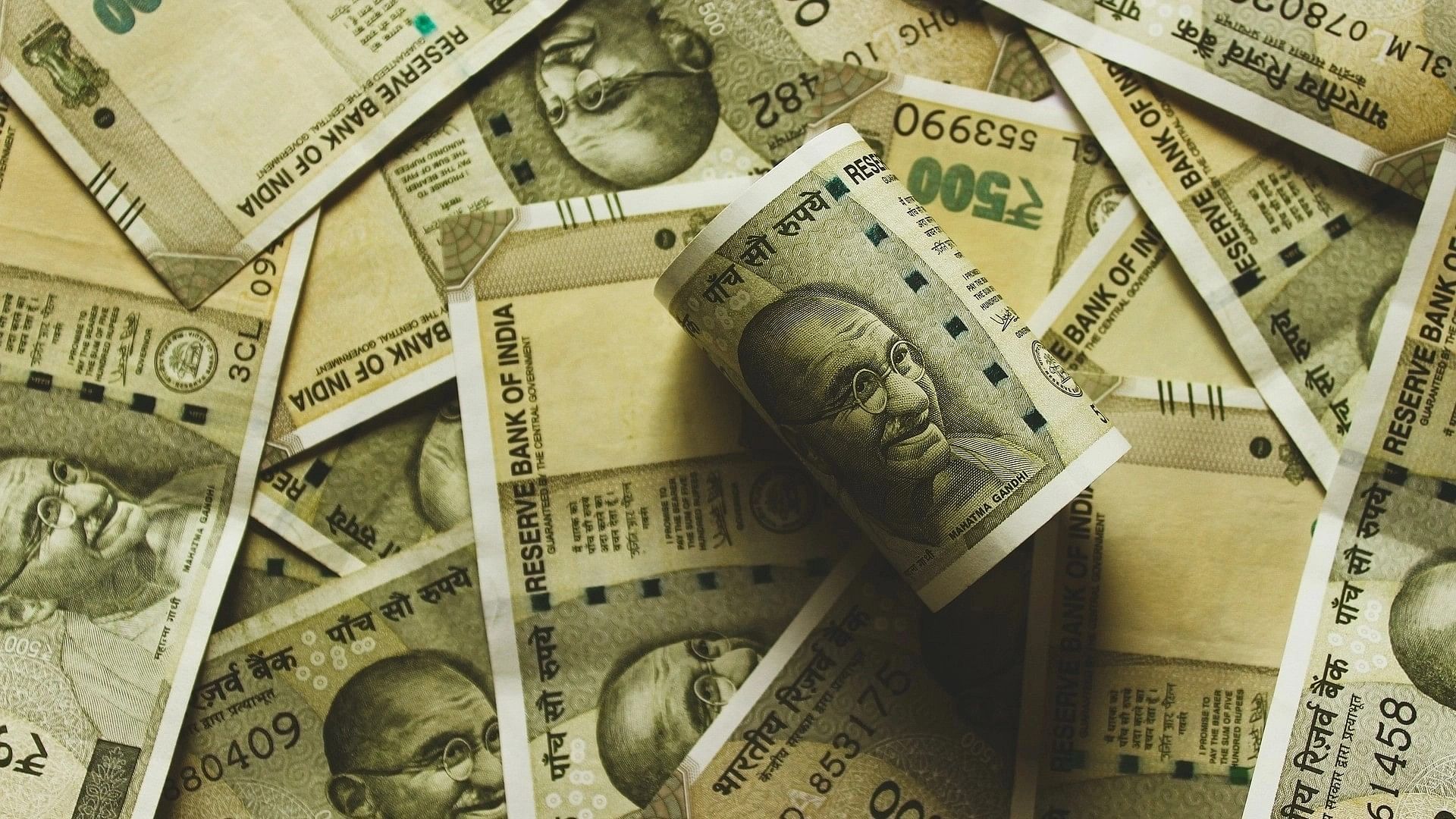
Representative image showing Indian rupees.
Credit: Pixabay Photo
Maharashtra Chief Minister launched ‘Ladli Bahin Yojana’ in August to pay a Rs 1,500 cash handout every month to the women aged 21 to 65. The scheme will cost the Maharashtra government more than Rs 18,000 crore a year. The Congress-Shiv Sena-Nationalist Congress Party-led Maha Vikas Aghadi (MVA) alliance has promised to double the amount if voted to power in the on-going Assembly elections.
Free/subsidised goodies to voters funded from the government Budget are freebies/revadis. Transfer of money to voters, in cash or bank accounts, is cash handout.
Cash handout schemes have, of late, become politicians’, across central and state governments, preferred social welfare instrument to secure votes — or bribe voters.
After elections in Karnataka, Rajasthan, and Madhya Pradesh in 2023, the cash handout wind has turned into a gale. It is now a no-holds-barred competitive race.
Is this a race to the fiscal bottom? Will it bankrupt states?
Bouquet of social welfare schemes
The numerous welfare and redistribution expenditures, undertaken by governments for decades, are primarily of three types.
First, wages, self-employment, and income earning schemes like MGNREGA, the NLRM, other self-help group (SHG)-oriented schemes, and schemes making contributions in employee pension or provident funds.
Second, free or subsidised goods and services providing/distribution schemes like education, health services, food, fertilisers, electricity, water, cycles, televisions, sarees, mobile phones, etc.
Third, cash handouts schemes like Rs 6,000 under the PM KISAN, Rs 2,000 to women under the Gruha Lakshmi Scheme in Karnataka, Rs 200/500 to old age persons under the NSAP or unemployment allowance to youth, interest subvention under crop loan schemes or premium payment under the Fasal Bima Yojana.
Welfare expenditure is humungous
The government’s expenditure is of broadly four types.
First, non-current expenditures like interest and pensions which do not provide any service to people/voters in the present.
Second, public goods and services expenditures like defence, law and order, and control of pollution, which is government’s primary function.
Third, economic/growth promoting expenditure like building rail and road infrastructure or promoting agriculture and industrialisation.
Fourth, social welfare and redistribution expenditures for helping poor/marginalised, and reducing inequality in consumption.
A detailed count of welfare/redistribution expenditure of the Union government informs that the government budgeted to spend Rs 10.77 trillion in 2024-2025, which amount to 22.3% of the total Budget of Rs 48.21 trillion. It works out to approximately Rs 7,700 per person for India’s 140 crore population.
States, being more directly public facing, spend most of their budgets on welfare/redistribution. They would be easily spending about 2.5 times of the Union government in 2024-2025 or about Rs 19,300 per person.
Together, the Union and state governments will be spending close to Rs 26,000 per person on welfare/redistribution.
Welfare morphing into cash handouts
Free or subsidised goods and services were the principal mode of delivering social welfare for decades. The wage/income earning schemes began in the 1970s (SFDA/IRDP) and expanded in the 1980s-1990s (NREP/employment guarantee schemes).
Major cash handout schemes are of a more recent vintage. The cash handout schemes are, however, the most dynamic of the lot, and are mushrooming at a very rapid pace.
The cash handout schemes establish direct connection between the politician/party and person/voter receiving it. These schemes are undoubtedly the most effective way to grant direct and tangible favour to voters which can return the favour with their votes to the supposed benefactor(s).
The cash handout schemes are easy to design and streamline delivery of benefits directly to the beneficiaries without any transmission loss. No doubt smart politicians have taken fancy for such schemes.
The cash handout schemes also transfer full purchasing power to the recipients as well. As most cash handout schemes are unconditional, the recipients are completely free to decide on what and when to spend the cash. The recipients see clear advantages over amorphous benefits of other social welfare schemes.
Fiscal race to the bottom?
Will expanding cash handout schemes cause a fiscal crash for states? I don’t think so.
Primarily because the states operate under the hard budget constraint of their fiscal deficits not exceeding 3% of their GSDP. This makes sure that new cash handout schemes must be accommodated within this limit, or some other expenditure e.g. capital expenditure is slashed.
Cash handout schemes can improve administrative efficiency and development if the governments link these with desirable developmental outcomes; for example, by linking Ladli Behan payouts to improvement in nutrition and health indicators of the recipient women and their children.
In times to come, the Union and state governments should transform their existing welfare expenditures into well-designed and development-outcome linked cash handout schemes. Fertiliser, water, and electricity subsidies can be replaced with cash transfers to farmers linked to prudent fertiliser, water, and electricity use. Food subsidies can be replaced by food coupons/cash transfers linked to improvement in nutrition standard of family.
In case the governments are prudent, vigilant, and thoughtful, the potential and incoming juggernaut of cash handout schemes will make public administration more developmental and efficient, and also empower people in taking care of them more sensibly, instead of turning into a fiscal disaster or making the States bankrupt.
(Subhash Chandra Garg is former Finance & Economic Affairs Secretary, and author of ‘The Ten Trillion Dream’ and ‘We Also Make Policy’.)
Disclaimer: The views expressed above are the author's own. They do not necessarily reflect the views of DH.